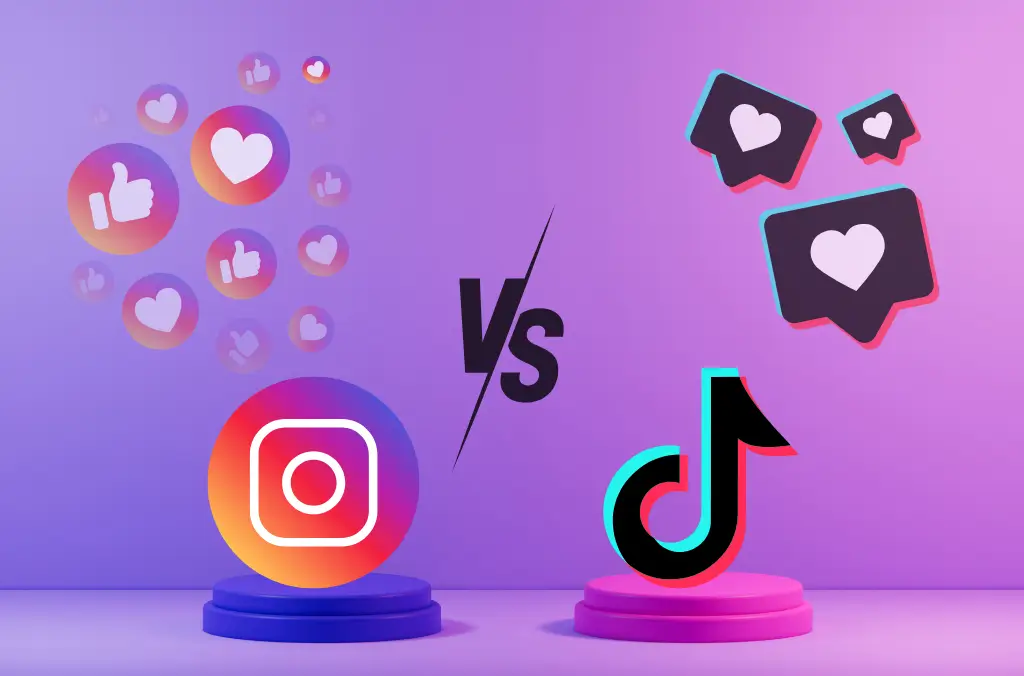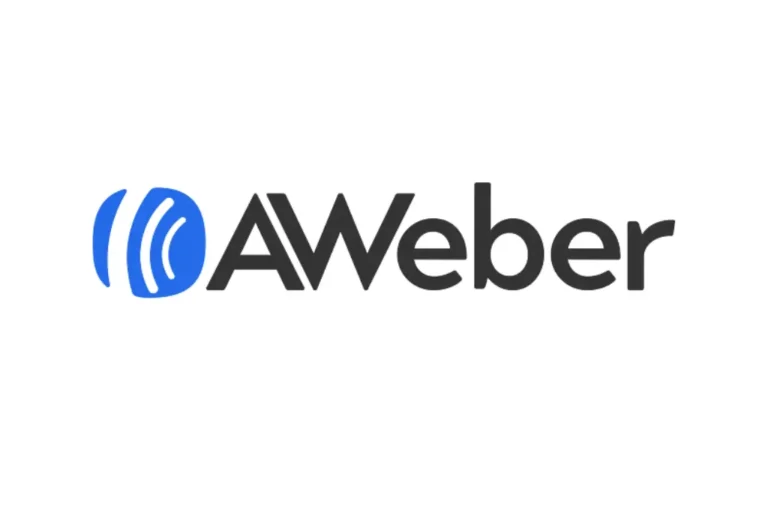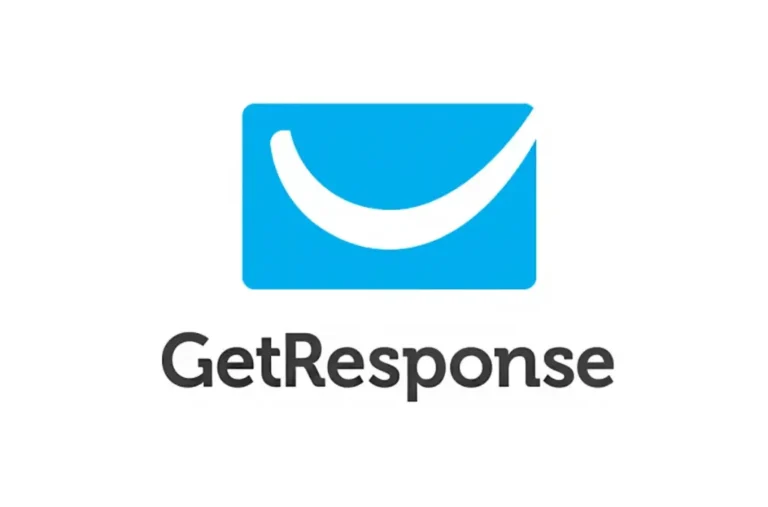Table of Content
Table of Contents
Introduction
Choosing between TikTok Ads vs Instagram Ads? This comprehensive guide breaks down the key differences in audience, cost, formats, targeting, and performance to help you decide which is best for your business goals in 2024. When comparing TikTok advertising vs Instagram advertising, understanding the unique strengths of each platform is crucial for optimizing your social media marketing budget. With social media advertising becoming increasingly competitive, selecting the best ad platform – TikTok or Instagram – is more important than ever. Both platforms offer powerful advertising solutions, but they serve different audiences and excel in different areas.
In this detailed TikTok Ads vs Instagram Ads comparison, we’ll analyze everything from demographic reach and cost structures to creative formats and measurement capabilities—giving you all the information you need to make an informed decision about whether TikTok advertising vs Instagram advertising is right for your brand.
Quick Comparison Table: TikTok Ads vs. Instagram Ads at a Glance
When evaluating TikTok Ads vs Instagram Ads for your marketing strategy, this comparison table highlights the key differences between these leading platforms:
| Feature | TikTok Ads | Instagram Ads |
|---|---|---|
| Primary Audience | Gen Z (18-24), Younger Millennials (25-34) | Millennials (25-40), Gen Z (18-24), Gen X (40-55) |
| Avg. Cost Perception | Lower CPM, higher production requirements | Higher CPM, established ad ecosystem |
| Best For Goals | Brand awareness, viral campaigns, trend participation | E-commerce sales, lead generation, community building |
| Ad Format Strength | Short-form video, authentic content, trend-based | Visual storytelling, polished aesthetics, multi-format |
| Content Style | Raw, authentic, entertaining, trend-focused | Curated, aspirational, polished, lifestyle-oriented |
This TikTok advertising vs Instagram advertising comparison demonstrates why determining the best ad platform – TikTok or Instagram – depends largely on your specific marketing objectives and target audience.
Read: Powerful TikTok Business Advertising for Your Brand in 2025
Audience Demographics: Reaching Your Target Customer
When comparing TikTok Ads vs Instagram Ads, understanding the demographic differences is essential for targeting your ideal customers effectively.
Instagram Audience Breakdown
Instagram’s user base continues to evolve in 2024, though it maintains its strength among millennial users:
- Age: Core users are 25-34 (31.2%), followed by 18-24 (30.1%) and 35-44 (16.5%)
- Gender: Slightly more female users (52.4%) than male (47.6%)
- Interests: Fashion, beauty, travel, food, fitness, lifestyle content
- Location: Strong in North America, Europe, and parts of Asia-Pacific
- Usage Stats: 1.5+ billion monthly active users globally
According to Statista’s latest data, Instagram reaches approximately 71% of US adults aged 18-34, making it particularly effective for brands targeting millennial consumers with discretionary income.
TikTok Audience Breakdown
TikTok continues its explosive growth trajectory in 2024 with a distinctly younger skew:
- Age: Dominated by 18-24 (43.7%), followed by under-18 (22.4%) and 25-34 (22.1%)
- Gender: Nearly even split with slightly more female users (53%)
- Interests: Entertainment, humor, dance trends, educational content, DIY
- Location: Strong global presence, particularly in US, Southeast Asia, and growing rapidly in Europe
- Usage Stats: 1.2+ billion monthly active users globally
Research from eMarketer shows TikTok users spend an average of 95+ minutes per day on the platform, significantly higher than Instagram’s average of 51 minutes.
Key Differences & Strategic Implications
The demographic distinctions in the TikTok advertising vs Instagram advertising landscape have clear strategic implications when determining the best ad platform – TikTok or Instagram – for your campaign:
- If targeting Gen Z: TikTok offers substantially higher concentration and engagement. Nearly 60% of TikTok users are under 30, compared to about 48% on Instagram.
- If targeting Millennials: While both platforms have strong millennial presence, Instagram maintains better reach among the 28-40 segment, especially those with higher income levels.
- For luxury/premium brands: Instagram still maintains an edge with its aesthetically-driven environment and higher average household income users.
- For youth-oriented brands: TikTok’s dominance among teens and college-aged users is unmatched, with significantly higher daily time spent.
When weighing TikTok Ads vs Instagram Ads for demographic targeting, consider both the age distribution and the engagement patterns of each platform’s user base.
Advertising Costs & Budgeting: CPM, CPC, and ROI Potential
Instagram Ads Cost Factors
Instagram’s ad costs have stabilized somewhat after years of inflation, but remain premium:
- Average CPM: $5.00-$8.50 (varies by targeting)
- Average CPC: $0.50-$1.70
- Minimum daily budget: Around $5 per day
- Bidding options: Automatic bidding, target cost bidding, manual bidding
- Factors affecting cost:
- Audience competition (fashion, beauty typically higher)
- Seasonality (Q4 particularly expensive)
- Ad quality and relevance score
- Campaign objective (conversion objectives typically cost more)
According to AdEspresso’s benchmark study, Instagram Stories typically have lower CPMs than Feed placements, while Reels are gaining efficiency as adoption increases.
TikTok Ads Cost Factors
TikTok’s ad ecosystem continues to mature, affecting its pricing structure:
- Average CPM: $3.00-$6.50 (generally lower than Instagram)
- Average CPC: $0.40-$1.40
- Minimum campaign spend: $50 total campaign minimum (higher for certain formats)
- Bidding options: Cost cap, bid cap, lowest cost bidding
- Factors affecting cost:
- Ad format (premium formats like TopView cost significantly more)
- Industry competition (increasing in retail, beauty)
- Creative quality and engagement rate
- Targeting precision
TikTok’s self-service platform data shows that ads achieving high engagement often see CPM reductions of up to 30% as the algorithm rewards quality content.
Cost Comparison & Value Proposition
When directly comparing the costs in the TikTok Ads vs Instagram Ads debate:
- Entry-level budget: TikTok requires slightly higher minimum campaign spend ($50) compared to Instagram’s daily minimum of $5, making Instagram more accessible for very small businesses testing the waters.
- CPM efficiency: TikTok offers 10-30% lower CPMs on average compared to Instagram, making it potentially more cost-effective for reach-based campaigns.
- Production costs: Instagram content can often be produced more efficiently, especially for brands with existing photo assets, while TikTok typically requires video-specific creation.
- ROI considerations: While TikTok often delivers lower CPMs, Instagram typically shows stronger direct conversion metrics, especially for e-commerce.
In the TikTok advertising vs Instagram advertising cost comparison, TikTok generally emerges as the best ad platform for brands with limited budgets seeking maximum awareness, while Instagram’s established infrastructure and proven conversion track record may provide better initial ROI for direct response campaigns.
Want to experience TikTok’s cost-effective reach? Start advertising today!
Ad Formats & Creative Best Practices: Engaging Your Audience
Instagram Ad Formats
Instagram offers a diverse ecosystem of ad placements:
- Feed Ads: Classic in-feed posts that appear in users’ main scrolling experience
- Best practices: Square or vertical formats, attention-grabbing first frame, clear branding
- Ideal for: Product showcases, announcements, link driving
- Stories Ads: Full-screen vertical ads between user Stories
- Best practices: Design for sound-off viewing, use interactive elements (polls, sliders)
- Ideal for: Immersive experiences, limited-time offers, behind-the-scenes content
- Reels Ads: Short-form video ads within Instagram’s TikTok competitor
- Best practices: Fast-paced editing, trend participation, authentic approach
- Ideal for: Reaching younger audiences, showcasing products in action
- Explore Ads: Appear when users click content in the Explore tab
- Best practices: Discovery-focused content, visually striking imagery
- Ideal for: New audience acquisition, trend-based marketing
- Shopping Ads: Shoppable posts enabling direct purchases
- Best practices: Clear product focus, multiple items per ad, lifestyle context
- Ideal for: Direct e-commerce conversion, catalog promotion
TikTok Ad Formats
TikTok’s ad ecosystem is more video-centric but offers several powerful options:
- In-Feed Ads: Native video ads appearing in the For You Page
- Best practices: First 2 seconds crucial, trending sounds, authentic approach
- Ideal for: Brand awareness, engagement, website traffic
- TopView Ads: Premium placement appearing when app first opens
- Best practices: High-impact visuals, clear CTA, brand message in first 3 seconds
- Ideal for: Maximum visibility, brand launches, major campaigns
- Branded Hashtag Challenges: Sponsored hashtags encouraging UGC creation
- Best practices: Simple participation mechanics, clear demonstration, influencer seeding
- Ideal for: Mass awareness, community building, content generation
- Branded Effects: Custom AR effects and filters
- Best practices: Fun, shareable experiences tied to brand identity
- Ideal for: Playful brands, youth targeting, virtual try-on experiences
- Spark Ads: Boosting organic content (yours or partners’ with permission)
- Best practices: Amplify already-performing content, authentic voice
- Ideal for: Leveraging successful organic content, influencer amplification
Ready to create your first TikTok Ad campaign? Launch your business on TikTok today!
Head-to-Head: Which Format Wins for Which Goal?
In the TikTok Ads vs Instagram Ads format comparison, each platform shows distinct advantages for different marketing objectives:
- Short Video: TikTok In-Feed vs. Instagram Reels
- TikTok advantage: Better discovery algorithm, more creative tools, more forgiving of raw content
- Instagram advantage: More polished environment, better for luxury positioning, stronger shopping integration
- Immersive Experiences: TikTok TopView vs. Instagram Stories
- TikTok advantage: Higher attention capture, better sound-on viewing
- Instagram advantage: More interactive elements, established user behavior
- User-Generated Content: TikTok Hashtag Challenges vs. Instagram UGC
- TikTok advantage: Significantly stronger participation culture, better viral mechanics
- Instagram advantage: Higher-quality UGC production, better brand safety controls
- Creative Style Requirements:
- TikTok thrives on: Authentic, entertaining, trend-participating content
- Instagram rewards: Visually appealing, aspirational, aesthetically consistent content
When determining the best ad platform – TikTok or Instagram – for your specific creative approach, consider how your brand’s content style aligns with each platform’s native environment.
Targeting Capabilities: Precision vs. Broad Reach
The targeting capabilities in the TikTok Ads vs Instagram Ads comparison represent an important consideration for advertisers seeking to reach specific audiences.
Instagram Targeting Options
Instagram (through Meta’s ad platform) offers highly sophisticated targeting:
- Demographic targeting: Age, gender, location, language, education, relationship status
- Interest targeting: Thousands of interest categories based on user behavior
- Behavioral targeting: Purchase behavior, device usage, travel patterns
- Custom Audiences: Upload customer lists, website visitors, app users
- Lookalike Audiences: Find users similar to your best customers
- Advantage+ Campaigns: AI-driven audience expansion and optimization
Instagram’s standout targeting strength is its connection to Facebook’s vast data ecosystem, allowing for granular interest and behavior targeting with exceptional precision.
TikTok Targeting Options
TikTok’s targeting capabilities have improved substantially:
- Demographic targeting: Age, gender, location, language
- Interest targeting: Categories based on video engagement
- Behavioral targeting: Device value, new devices, connection type
- Custom Audiences: Website visitors, app activity, customer lists
- Lookalike Audiences: Find users similar to seed audiences
- Automated Creative Optimization: AI-powered creative testing
TikTok’s distinctive advantage lies in its content-based targeting, which identifies users based on the types of videos they engage with rather than stated interests.
Comparing Targeting Granularity & Effectiveness
When evaluating TikTok advertising vs Instagram advertising targeting capabilities:
- Precision targeting: Instagram maintains an edge in targeting specificity, particularly for niche interests and demographic combinations.
- Interest accuracy: Instagram’s interest targeting draws from years of cross-platform data, while TikTok’s is based primarily on in-app behavior.
- Lookalike quality: Instagram generally produces more refined lookalike audiences due to its broader data foundation.
- Discovery potential: TikTok’s algorithm excels at finding unexpected audience segments that respond to your content.
- Privacy adaptations: Both platforms have adapted to iOS privacy changes, though Instagram retains more first-party data advantages.
Determining the best ad platform – TikTok or Instagram – for targeting depends on campaign objectives. For brands requiring hyper-targeted campaigns (e.g., B2B with specific job titles), Instagram typically offers better precision. For brands seeking to expand reach through algorithmically-identified audiences, TikTok often delivers stronger results.
Performance, Analytics & Measurement
Effective measurement is crucial when comparing TikTok Ads vs Instagram Ads to determine which platform delivers better results for your specific business objectives.
Key Metrics on Instagram Ads
Instagram provides comprehensive measurement capabilities:
- Core metrics: Impressions, reach, frequency, engagement rate, video views
- Business metrics: Link clicks, conversions, purchase value, ROAS
- Unique metrics: Story taps forward/back, profile visits, saves
- Attribution options: 1-day, 7-day, 28-day attribution windows
- Reporting features: Custom dashboards, breakdowns by placement, demographic insights
Instagram’s analytics strength lies in its detailed attribution modeling and cross-platform view when integrated with Facebook campaigns.
Key Metrics on TikTok Ads
TikTok offers robust but still-evolving analytics:
- Core metrics: Impressions, reach, frequency, engagement rate, video views
- Performance metrics: Clicks, conversions, cost per result
- Platform-specific metrics: Video watch percentage, share rate, follow rate
- Attribution options: Click-through, view-through, app event attribution
- Reporting features: Custom reporting, automated insights, audience analysis
TikTok’s analytics platform excels at measuring engagement quality, providing detailed insights into how users interact with ad content.
Comparing Tracking & Attribution Capabilities
Important differences in TikTok advertising vs Instagram advertising measurement approaches:
- Pixel implementation: Both platforms offer pixel tracking, but Instagram’s (Meta Pixel) has wider adoption and more mature features.
- Attribution accuracy: Instagram generally provides more comprehensive multi-touch attribution, while TikTok is stronger on view-through attribution for awareness.
- Reporting interface: Instagram offers more customization and data export options, while TikTok provides more intuitive visual reporting.
- Cross-device tracking: Instagram has stronger cross-device tracking capabilities through its connection to Facebook’s ecosystem.
- Privacy challenges: Both platforms face similar challenges with iOS 14+ and privacy regulations, though Meta has developed more workarounds.
When determining the best ad platform – TikTok or Instagram – for performance measurement, consider your marketing funnel. For brands requiring detailed conversion tracking and multi-touch attribution, Instagram’s more mature measurement infrastructure typically provides an advantage. For brands focused on upper-funnel metrics, TikTok’s engagement-focused reporting offers valuable insights.
Use Cases & Platform Strengths: When to Choose Which
Understanding the specific scenarios where each platform excels is crucial for optimizing your TikTok Ads vs Instagram Ads strategy.
When Instagram Ads Shine
Instagram typically delivers superior results for:
- E-commerce direct response: Higher conversion rates for online retailers, especially in fashion, beauty, and lifestyle categories
- Lead generation: Better form completion rates and lead quality for service businesses
- Local business targeting: Superior location-based targeting for brick-and-mortar businesses
- Luxury/premium positioning: Environment better suited for aspirational messaging and higher price points
- Multi-format campaigns: Brands wanting to leverage both static and video creative
- Complex customer journeys: Better for nurturing prospects through sequential messaging
Case example: A luxury skincare brand used Instagram’s shopping features to drive a 32% higher ROAS compared to other platforms by leveraging carousel ads showcasing product benefits followed by retargeting through Stories featuring customer testimonials.
When TikTok Ads Excel
TikTok typically delivers superior results for:
- Brand awareness campaigns: Unmatched reach and recall metrics, especially with younger audiences
- Viral marketing potential: Superior organic sharing and UGC generation
- Youth-focused brands: Unparalleled reach and engagement with Gen Z
- Entertainment and app promotion: Strong performance for music, games, and entertainment apps
- Trend participation: Ability to join cultural moments in real-time
- Educational content marketing: Strong performance for how-to and informational content
Case example: A mobile gaming app used TikTok’s in-feed ads to achieve a 209% increase in install volume compared to other platforms by creating trend-participating creative that demonstrated gameplay in an authentic, non-polished format.
Want results like these? Start your TikTok advertising journey here!
Can They Work Together? (Complementary Strategies)
In the TikTok advertising vs Instagram advertising debate, most sophisticated marketers are finding value in using both platforms strategically:
- Funnel approach: Use TikTok for top-of-funnel awareness and Instagram for middle/bottom funnel conversion
- Audience segmentation: Target younger segments on TikTok and older millennials on Instagram
- Content repurposing: Create TikTok-first content that can be repurposed for Instagram Reels
- Testing ground: Use TikTok to identify winning creative concepts before scaling on Instagram
- Remarketing sequence: Introduce brand on TikTok, then retarget engaged viewers on Instagram with product-specific offers
Rather than trying to determine the single best ad platform – TikTok or Instagram – the most effective multi-platform approach typically involves distinct creative strategies tailored to each platform’s unique environment rather than simply cross-posting identical content.
Potential Pitfalls & Challenges
Common Instagram Ad Mistakes
Avoiding these frequent errors can dramatically improve Instagram campaign performance:
- Ad fatigue: Instagram users see more ads per session than TikTok users, requiring more creative refreshes to maintain performance
- Poor creative adaptation: Using the same creative across Feed, Stories, and Reels rather than format-optimized content
- Insufficient testing: Not testing enough creative variations or audience segments
- Over-reliance on static images: Failing to incorporate video despite algorithm preferences
- Brand inconsistency: Creating ads that don’t align with organic content or brand voice
- Call-to-action overload: Including too many competing CTAs in a single ad
Common TikTok Ad Hurdles
TikTok presents its own unique challenges for advertisers:
- Creative demands: Higher expectation for fresh, trend-relevant content can strain resources
- Platform volatility: Rapidly evolving features and best practices require constant adaptation
- Content-platform mismatch: Brands struggling to adapt corporate messaging to TikTok’s authentic style
- Production value calibration: Creating content that feels native rather than overly polished
- Tracking limitations: Less robust attribution capabilities for complex purchase journeys
- Brand safety concerns: Less predictable content environment than Instagram
Future Trends: What’s Next for TikTok and Instagram Ads?
Looking ahead, several emerging trends will shape advertising on both platforms:
- AI-generated content: Both platforms are integrating generative AI tools for advertisers, with TikTok’s AI creative assistant currently offering more robust capabilities
- Social commerce evolution: Instagram maintains the lead in integrated shopping experiences, but TikTok Shop is rapidly gaining ground, particularly in Asian markets
- Creator marketplace integration: Both platforms are enhancing their creator collaboration tools, with TikTok’s Creator Marketplace offering more seamless paid partnership options
- Augmented reality expansion: Instagram currently leads in AR ad experiences, but TikTok is investing heavily in this area
- Video dominance: Both platforms continue to prioritize video in their algorithms, with TikTok maintaining an edge in short-form video discovery
- Data privacy adaptations: Both platforms are developing new measurement solutions in response to increasing privacy regulations
TikTok Advertising Tip: As TikTok continues to enhance its advertising platform with new features and capabilities, early adopters typically see the best results. Start your TikTok advertising journey today to stay ahead of competitors and capitalize on these emerging trends!
Conclusion: Making Your Decision (Decision Framework)
When deciding between TikTok Ads vs Instagram Ads for your advertising budget, consider this comprehensive decision framework:
Your Primary Goal
- Brand awareness & reach: TikTok generally provides more efficient reach
- Conversions & sales: Instagram typically delivers stronger direct response
- Community building: Instagram offers more robust tools for ongoing engagement
- Viral potential: TikTok’s sharing mechanics provide superior virality
Your Target Audience
- Gen Z dominant: TikTok offers substantially higher concentration
- Millennial focus: Instagram maintains stronger penetration
- Broad demographic: Instagram reaches a wider age range
- Interest-based niches: Instagram typically offers more precise targeting
Your Budget
- Limited budget, conversion focus: Instagram typically delivers better ROI
- Limited budget, awareness focus: TikTok typically delivers more impressions
- Substantial budget: Consider split testing or complementary strategies
Your Creative Capacity
- Limited video production: Instagram accommodates both image and video
- Strong video capabilities: TikTok rewards video creation skills
- Authentic, trend-based content: TikTok’s environment is more receptive
- Polished, brand-controlled aesthetic: Instagram provides more creative control
In the TikTok advertising vs Instagram advertising comparison, there’s no one-size-fits-all answer to determine the best ad platform – TikTok or Instagram. The most successful social advertising strategies in 2024 involve testing both platforms with platform-optimized creative rather than making an either/or decision. Start where your audience is most concentrated, but don’t rule out either platform without proper testing.
**Ready to tap into TikTok’s powerful advertising platform? Get started today and unlock your brand’s viral potential!xf.io/BnG5qJ)
Frequently Asked Questions (FAQ)
Are TikTok ads cheaper than Instagram ads?
On average, TikTok ads have 10-30% lower CPMs than Instagram ads, making them more cost-effective for reach-based campaigns. However, Instagram often delivers stronger direct conversion metrics, especially for e-commerce, potentially offering better ROI despite higher costs. Production costs should also be considered – TikTok requires video-specific creation while Instagram accommodates both images and video. Try TikTok’s cost-effective ads today.
Which platform is better for B2B marketing?
Instagram generally performs better for B2B marketing due to its more professional environment, stronger targeting capabilities for professional attributes, and integration with LinkedIn data through Meta’s ecosystem. However, TikTok is showing increasing potential for B2B brand awareness and thought leadership, particularly when targeting younger decision-makers or using educational content marketing approaches.
Do I need different creatives for TikTok and Instagram?
Yes, using platform-specific creative is strongly recommended. While some content can be repurposed, each platform has distinct creative best practices and user expectations. TikTok favors authentic, trend-participating content with native features like text overlays and effects, while Instagram rewards more polished, brand-consistent creative. At minimum, aspect ratios and calls-to-action should be optimized for each platform’s environment.
How much should I budget to test advertising on these platforms?
For meaningful initial testing, allocate at least $1,000-$2,500 per platform over a 2-4 week period. This allows for testing multiple creative variants and audience segments while gathering statistically significant data. Start with broader targeting and simplified conversion goals during testing phases. Remember that TikTok campaigns have a $50 minimum campaign spend, while Instagram can be tested with as little as $5 per day. Start your TikTok ad campaign with just $50.
Which platform offers better targeting for local businesses?
Instagram generally offers superior local business targeting through Meta’s more robust location-based options, including radius targeting, address targeting, and integration with Facebook’s local awareness tools. TikTok’s location targeting is improving but currently offers less granularity for hyperlocal campaigns. However, TikTok often delivers stronger organic reach for local businesses creating location-specific content.




